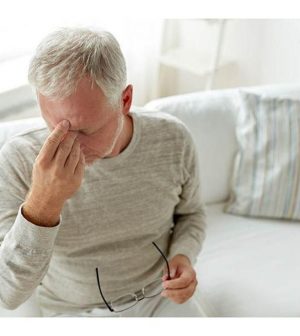- How Daily Prunes Can Influence Cholesterol and Inflammation
- When to Take B12 for Better Absorption and Energy
- Epsom Salts: Health Benefits and Uses
- See What Saffron Can Do for Sleep and Heart Health
- 6 Common Mistakes to Avoid Before Your Physical
- Can Sweating Really Help You Beat a Cold?
- Strengthening Your Relationship: Practical Strategies
- Skip Storing This Everyday Product in the Fridge Door
- Green Tea + B3 Pairing May Boost Brain Health
- Navigating Your Midlife Crisis: Embracing New Possibilities
Nearly 3 in 10 U.S. Adults Say They Have a Disability

A growing number of American adults say they have a physical or mental disability, a new study finds.
Of more than 400,000 adults who responded to a 2019 U.S. Centers for Disease Control and Prevention survey, 27% reported a disability. That’s a 1% increase since 2016, and represents about 67 million Americans, according to researchers at Johns Hopkins University who analyzed the data.
Moreover, about 12% said they had more than one disability. The most common types were: mobility; cognitive/mental; independent living (requiring help for daily tasks and outings); hearing; vision; and self-care (needing help with bathing, dressing and other personal care tasks).
To reduce discrimination and create more inclusive communities, “our country must be equipped with data on the prevalence of disabilities and who is most impacted by them,” said study co-author Bonnielin Swenor, director of the Hopkins Disability Health Research Center and an associate professor of ophthalmology at the school of medicine, in Baltimore.
An aging population may have contributed to the increase in disabilities since 2016, Swenor said in a Johns Hopkins Medicine news release.
The researchers also found racial and social disparities in disability rates.
Disabled adults were more likely to be older, female, Hispanic, have less than a high school education, and have low income. They also had higher odds of being unemployed, bisexual, transgender or gender nonconforming, the findings showed.
Black women were more likely to have a disability than women of other races. However, gay or bisexual Black adults were less likely to have a disability than gay or bisexual adults of other races.
The findings were published online recently in JAMA Network Open.
The data used in the study was collected before the COVID-19 pandemic, so the percentage of U.S. adults with disabilities may be even higher now due to long-term effects of COVID-19, Swenor noted.
“Developing effective measures and policies to include people with disabilities in all aspects of life needs to account for the variability in how people among different ethnic, socioeconomic, demographic and geographic groups experience disability,” Swenor said.
“With robust data, we can strengthen the foundation of our knowledge about disability and develop tangible solutions,” she added.
More information
The U.S. Centers for Disease Control and Prevention has more on disability.
SOURCE: Johns Hopkins Medicine, news release, Oct. 21, 2021
Source: HealthDay
Copyright © 2026 HealthDay. All rights reserved.










